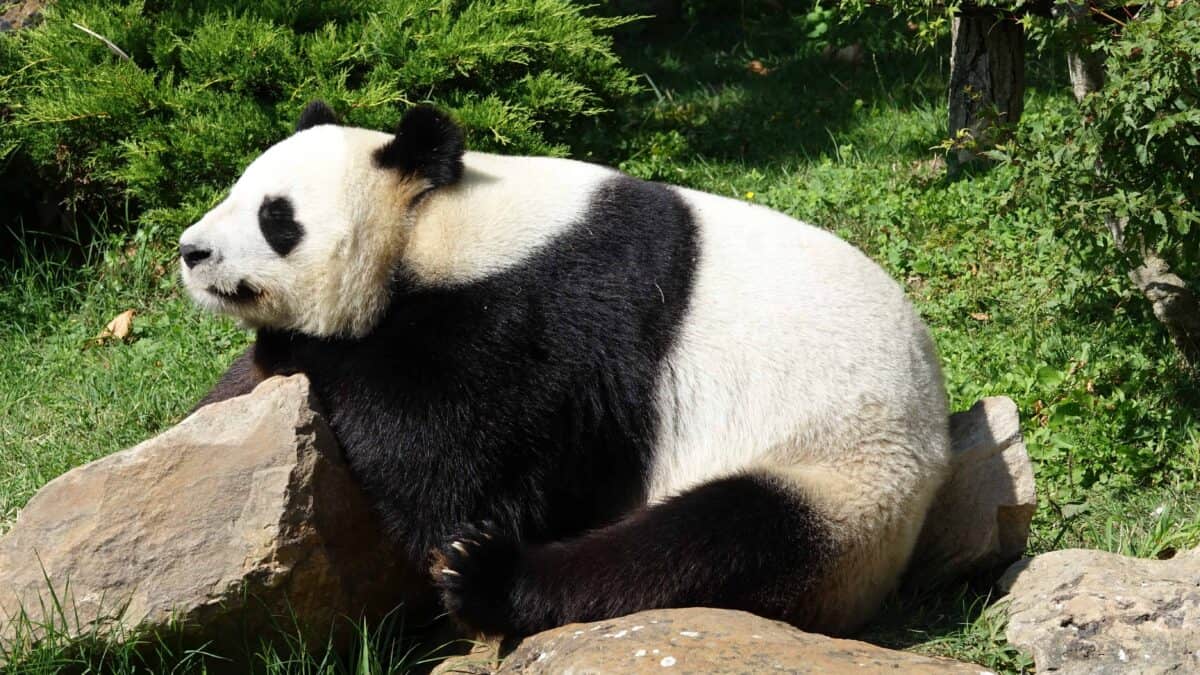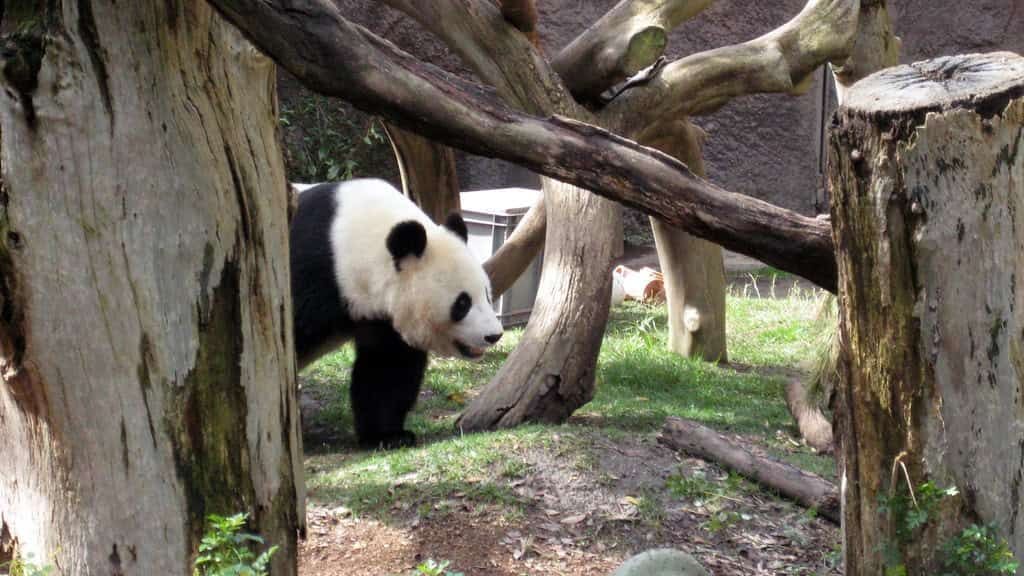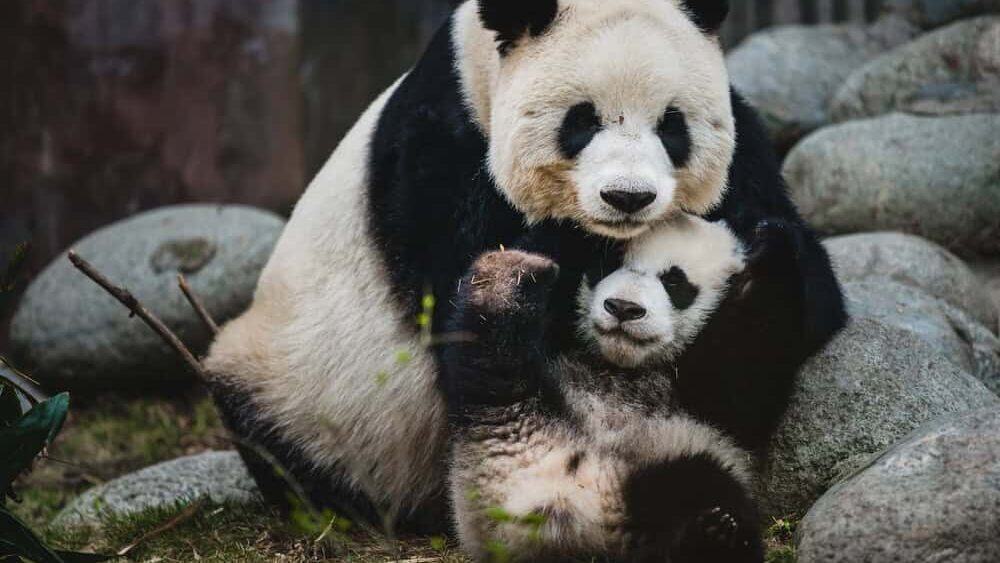Giant pandas (Ailuropoda melanoleuca) have captivated human hearts worldwide with their distinctive black and white markings and endearing bamboo-munching habits. While these iconic bears are often portrayed in media as cuddly and sociable animals, the reality of panda behavior reveals a different story. Unlike many mammals that live in family groups or complex social structures, giant pandas are remarkably solitary creatures that spend the vast majority of their lives alone.
This solitary nature often surprises those who associate pandas with their seemingly playful zoo behaviors or their status as beloved conservation ambassadors. In fact, adult pandas in the wild may actively avoid each other except during brief mating periods. Understanding why these charismatic bears prefer solitude requires exploring their evolutionary history, ecological niche, and the unique challenges they face as specialized bamboo eaters in their native mountain forests of central China.
Evolutionary History and Solitary Adaptation

The evolutionary path that led to the modern giant panda’s solitary lifestyle began millions of years ago. Genetic studies suggest that pandas diverged from other bears approximately 19 million years ago, developing specialized adaptations for their unique ecological niche. While most bears are omnivorous, pandas evolved to become almost exclusively bamboo eaters, a dietary specialization that profoundly shaped their social behavior.
This dietary specialization created evolutionary pressure toward solitude. When a species depends on a food source that is widely distributed but relatively low in nutritional value (like bamboo), group living becomes disadvantageous. The energetic costs of competition within a group would outweigh any benefits of social living. Natural selection favored pandas that could efficiently harvest bamboo without competing with others of their species, gradually reinforcing solitary tendencies through generations of evolutionary development.
Bamboo: The Dietary Driver of Solitude

Bamboo constitutes approximately 99% of the giant panda’s diet, with an adult panda consuming 20-40 pounds (9-18 kg) daily. Despite being members of the order Carnivora, pandas evolved specialized adaptations for processing plant material, including broader molars for grinding and an enlarged wrist bone that functions as a “pseudo-thumb” for grasping bamboo stems. However, bamboo is notoriously low in nutrients, containing minimal protein and difficult-to-digest cellulose.
This nutritional challenge forces pandas to spend 10-16 hours each day feeding. With such demanding dietary requirements, pandas simply cannot afford to share their food resources with others. If pandas lived in groups, competition for bamboo would be fierce, and the available food in any given area would be quickly depleted. By living alone and maintaining exclusive feeding territories, each panda ensures access to sufficient bamboo to meet their substantial daily requirements—a prime example of how dietary specialization has driven their evolution toward solitude.
Territory Management and Spatial Arrangements

Adult giant pandas maintain well-defined home ranges that vary in size depending on bamboo abundance and quality. Female pandas typically inhabit territories ranging from 1.5 to 3 square miles (4-8 square kilometers), while males may roam larger areas of 3 to 6 square miles (8-15 square kilometers). These territories often overlap, particularly between males and females, but direct encounters are deliberately minimized through complex scent-marking behaviors and temporal avoidance.
Pandas meticulously mark their territories using glandular secretions, urine, and feces. They have specialized scent glands near their tails and produce chemically complex urine that communicates detailed information about the individual’s identity, sex, reproductive status, and when they last visited the area. This elaborate olfactory communication system allows pandas to be “alone together”—sharing the same general forest habitat while minimizing actual encounters that might lead to competition or conflict. It represents a sophisticated adaptation that supports their solitary lifestyle while maintaining the minimum necessary communication for reproduction.
The Brief Mating Season Exception

The most notable exception to the panda’s solitary lifestyle occurs during their brief annual mating season, which typically spans just 2-3 days between March and May. During this short window, female pandas become receptive to mating and release specific scent signals that attract males. For this brief period, pandas actively seek each other out rather than avoid one another, with males sometimes competing for access to a receptive female.
However, even this social interlude is remarkably short-lived. After mating, pandas immediately return to their solitary existence. The female will raise any resulting cubs entirely on her own, without any paternal involvement. This minimal social interaction for reproduction represents an evolutionary compromise—maintaining the advantages of solitary living while ensuring the species’ continuation. The brevity of their mating interactions further emphasizes how deeply ingrained solitude is in panda behavior and life history.
Mother-Cub Relationship: The Only Sustained Social Bond

The sole long-term social relationship in a panda’s life exists between mother and cub. Female pandas typically give birth to one or occasionally two tiny, helpless cubs weighing just 3-5 ounces (85-140 grams). For approximately 18-24 months, the mother provides intensive care, nursing, protection, and eventually teaching her young to select and process bamboo effectively. This period represents the only time in a panda’s life when it experiences consistent social interaction and bonding.
The mother-cub relationship, while strong, has a predetermined endpoint. When the cub reaches about 1.5-2 years of age, the mother deliberately separates from her offspring, sometimes coinciding with her return to fertility and the next mating season. This separation can appear harsh but serves an important evolutionary purpose: it prevents resource competition between mother and maturing offspring while teaching the young panda the independent skills it will need for its solitary adult life. After this separation, the young panda will establish its own territory and fully embrace the solitary lifestyle characteristic of the species.
Communication Systems Adapted for Solitude

Despite their preference for solitude, pandas have developed sophisticated communication methods that allow them to exchange essential information without direct contact. Their primary communication system relies on scent marking, with pandas spending considerable energy depositing scent signals throughout their territories. They use a combination of scent glands, urine, and feces to create a complex olfactory landscape that other pandas can interpret days or even weeks later.
Vocalization represents another important but less frequent communication channel. Pandas have at least 11 distinct vocalizations, including chirps, honks, barks, and a distinctive bleat that females use during the mating season. These sounds carry through dense bamboo forests, allowing pandas to announce their presence or reproductive status from a distance. This rich communication system enables pandas to coordinate the minimal social interactions necessary for reproduction while otherwise maintaining their preferred solitary lifestyle—essentially allowing them to “talk” without meeting.
Cognitive and Behavioral Adaptations for Solitary Life

The panda brain and behavioral repertoire have evolved to support their solitary lifestyle. Unlike highly social mammals that devote significant cognitive resources to processing complex social information and maintaining group hierarchies, pandas have developed specialized mental capabilities focused on spatial memory, resource tracking, and efficient bamboo processing. Their cognitive adaptations prioritize remembering the location of preferred bamboo patches and optimizing feeding techniques.
Behaviorally, pandas display remarkably low aggression levels compared to many other bear species, particularly when not in direct competition. When pandas do encounter each other outside the mating season, they typically avoid confrontation through mutual avoidance rather than aggressive displays. This behavioral tendency toward conflict avoidance further supports their solitary lifestyle, as it reduces the energy costs and potential injuries associated with social conflicts while allowing them to share the broader habitat with minimal direct interaction.
Comparing Pandas to Other Bear Species

The giant panda’s extreme solitary nature becomes particularly evident when compared to other bear species. While most bears exhibit some degree of solitary behavior, many have more flexibility in their social structures. Brown bears (Ursus arctos), for instance, may form temporary aggregations at abundant food sources like salmon runs, with dozens of individuals tolerating close proximity during these seasonal feeding opportunities. Black bears may share territories with related females, creating loose matrilineal groups.
Polar bears (Ursus maritimus) and sloth bears (Melursus ursinus) also demonstrate greater social tolerance than pandas in certain contexts. The spectacled bear (Tremarctos ornatus), the panda’s closest living relative, shows more flexibility in its social arrangements. This comparison highlights how the panda’s extreme dietary specialization has pushed it toward the far end of the solitary spectrum even among typically non-social bear species, making it one of the least social large mammals on the planet.
Environmental Threats and Solitude Implications

The panda’s solitary nature creates unique conservation challenges in today’s fragmented landscape. As human development has divided the panda’s mountain forest habitat into increasingly isolated patches, their natural avoidance of each other combined with their reluctance to cross human-modified landscapes has created genetically isolated subpopulations. This fragmentation threatens genetic diversity and makes local extinction events more likely, as pandas won’t naturally recolonize areas from which they’ve disappeared.
Conservation efforts must therefore account for the panda’s solitary tendencies when designing habitat corridors and protected areas. Simply preserving disconnected forest fragments isn’t sufficient; pandas need contiguous habitat or well-designed wildlife corridors that accommodate their solitary movement patterns and territorial requirements. Understanding the evolutionary basis for their solitude is crucial for developing effective conservation strategies that work with, rather than against, their natural behavioral tendencies.
Captive Breeding Challenges Related to Solitude

The panda’s solitary nature has presented significant challenges for captive breeding programs essential to conservation efforts. In captivity, pandas must be housed separately most of the year to respect their natural behavioral preferences and prevent stress or aggression. Breeding facilities must carefully monitor females for the extremely brief window of fertility and introduce potential breeding pairs with precise timing—a process requiring sophisticated hormone monitoring and behavioral observation.
Even when brought together during the female’s receptive period, pandas may show discomfort or aggression rather than mating interest, reflecting their fundamental preference for solitude. These challenges explain why early captive breeding efforts were largely unsuccessful. Modern programs have achieved greater success by understanding and working with the pandas’ solitary nature, using techniques like natural enclosures with limited visual contact before introduction and sometimes even artificial insemination when natural mating proves impossible. These approaches acknowledge that the panda’s solitary tendencies are not merely habits but deeply ingrained evolutionary adaptations.
Misconceptions About Panda Sociability

Popular media and even some educational materials often portray pandas as sociable creatures, a misconception reinforced by carefully curated zoo footage of pandas playing or interacting. This misrepresentation stems partly from observations of captive pandas, particularly juveniles who may show playful behaviors with siblings or other young pandas. However, these interactions typically occur in artificial settings that wouldn’t exist in the wild, where siblings would normally be separated at birth (in the case of twins) or young pandas would be solitary after separating from their mothers.
Another source of misconception comes from anthropomorphizing pandas based on their appealing appearance. Their rounded faces, expressive eyes, and seemingly cuddly appearance trigger human nurturing instincts and social projections. Conservation organizations have sometimes leveraged this appeal without fully explaining the panda’s true solitary nature. Understanding that pandas naturally prefer solitude helps correct these misconceptions and provides a more accurate appreciation of these remarkable animals as they truly are—highly specialized solitary creatures perfectly adapted to their unique ecological niche.
The giant panda’s solitary lifestyle represents not a quirk or deficiency but a sophisticated evolutionary adaptation perfectly suited to their specialized ecological niche as bamboo consumers. Their preference for solitude enables them to efficiently exploit a nutritionally poor but abundant food source that would not support group living. Through millions of years of evolution, pandas have developed complex systems for territory management, indirect communication, and minimal but effective social interaction that allow them to coexist at appropriate distances.
Understanding the biological basis for panda solitude enhances our appreciation of these remarkable animals and improves conservation efforts designed to protect them. Rather than trying to force pandas into more social arrangements that contradict their natural tendencies, conservation programs have achieved greater success by respecting and accommodating their solitary nature. Their preference for solitude makes pandas no less fascinating—indeed, it reveals the remarkable diversity of mammalian social adaptations and the precise ways species evolve to fit their ecological circumstances.
As we continue efforts to protect giant pandas and their bamboo forest habitat, embracing their true nature as solitary specialists rather than projecting human social preferences onto them will lead to more effective conservation outcomes. The panda’s solitary lifestyle reminds us that in the natural world, diversity extends beyond physical appearances to fundamental aspects of behavior and social organization. Perhaps most importantly, it teaches us that solitude itself can be a sophisticated and successful evolutionary strategy rather than a limitation—a lesson that extends well beyond pandas to our understanding of biodiversity as a whole.
Their black and white appearance may make pandas stand out in the forest, but their solitary lifestyle helps them blend perfectly into the ecological niche they’ve occupied for millions of years—a fascinating paradox that makes these beloved bears even more remarkable than their appealing appearance might suggest.
- Crows Can Recognize Human Faces - August 17, 2025
- How Climate Change Is Pushing Sharks Closer to US Beaches - August 16, 2025
- 12 Birds Known for Their Unique Songs and Calls - August 16, 2025

